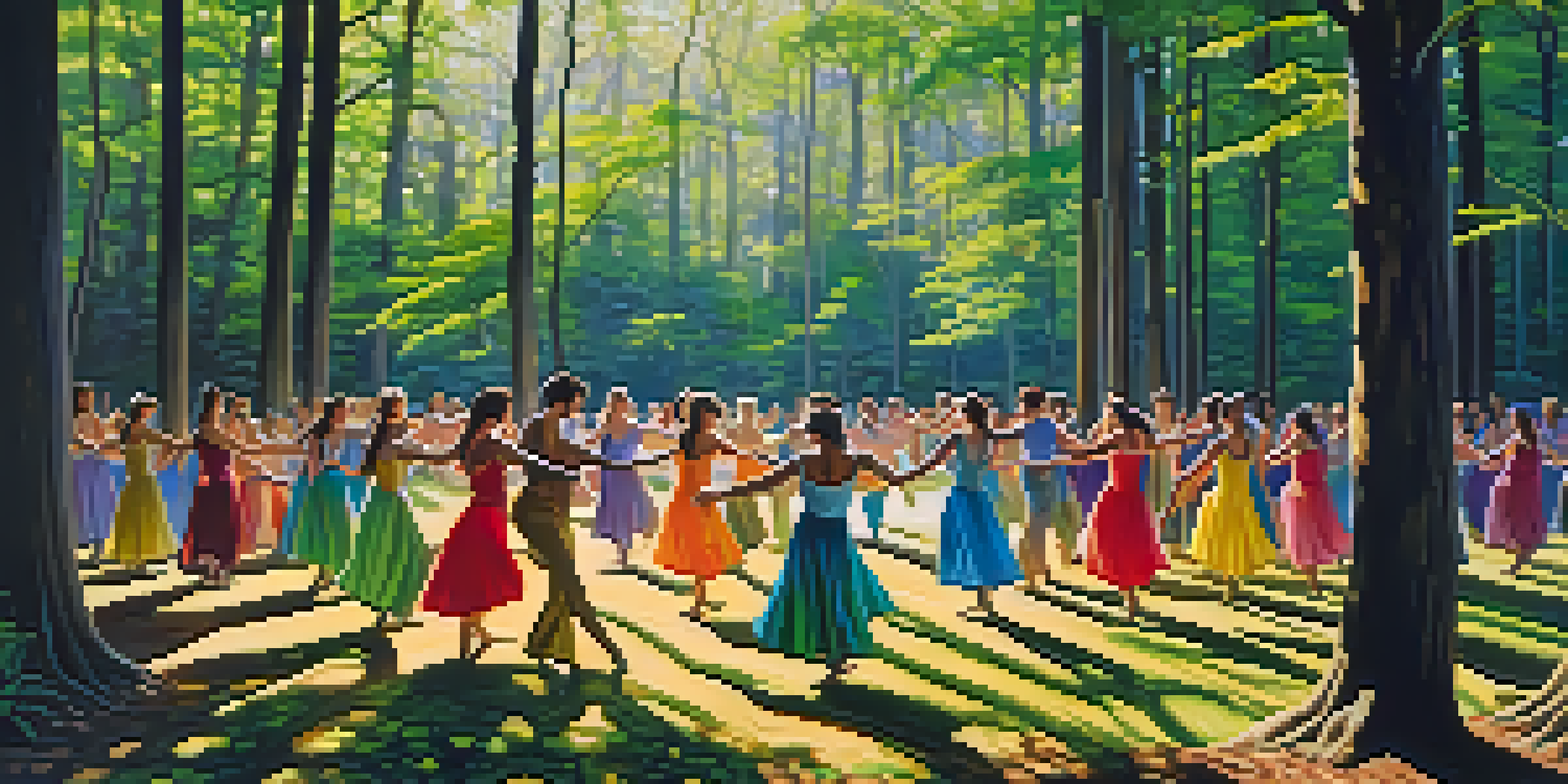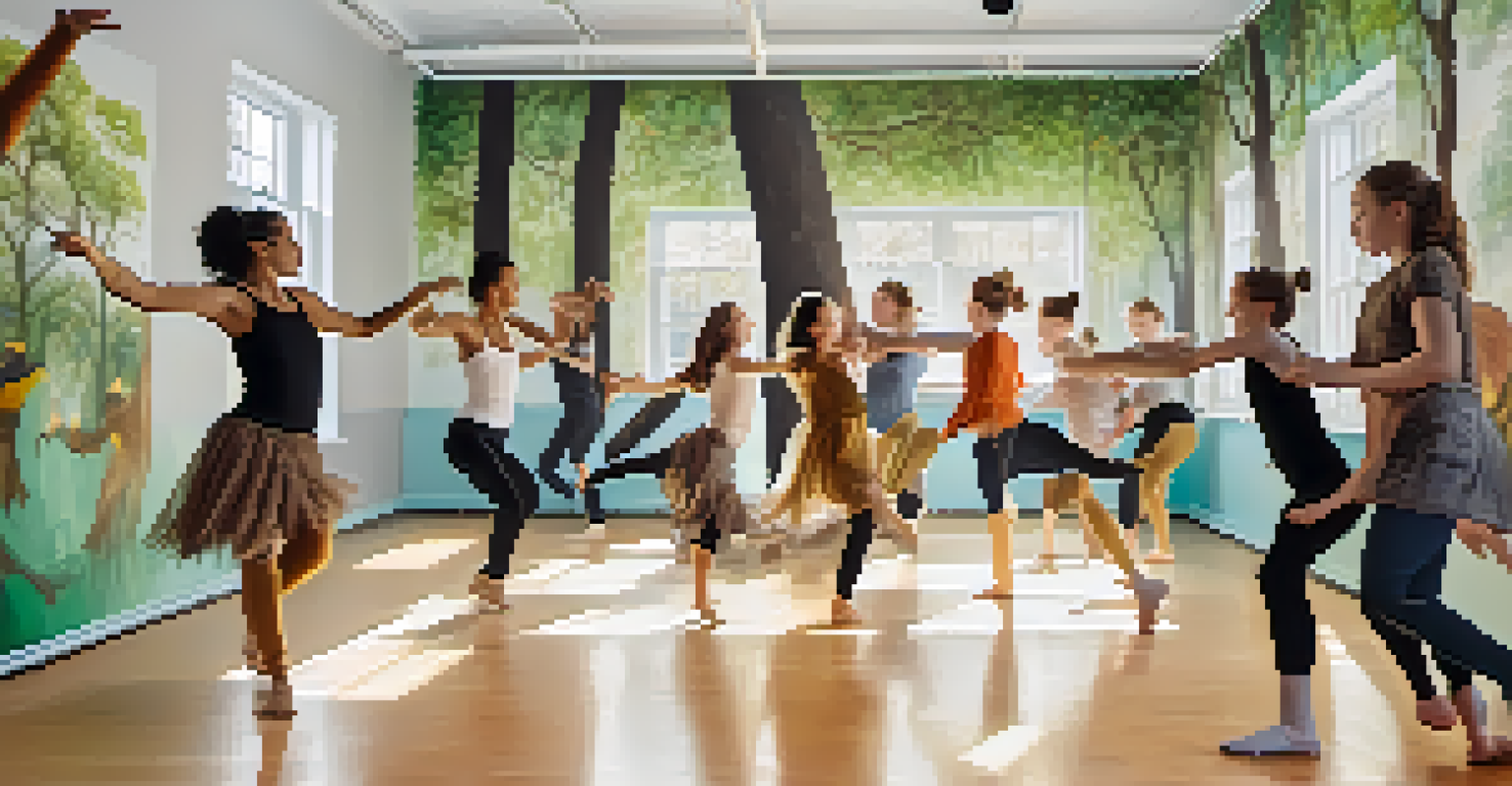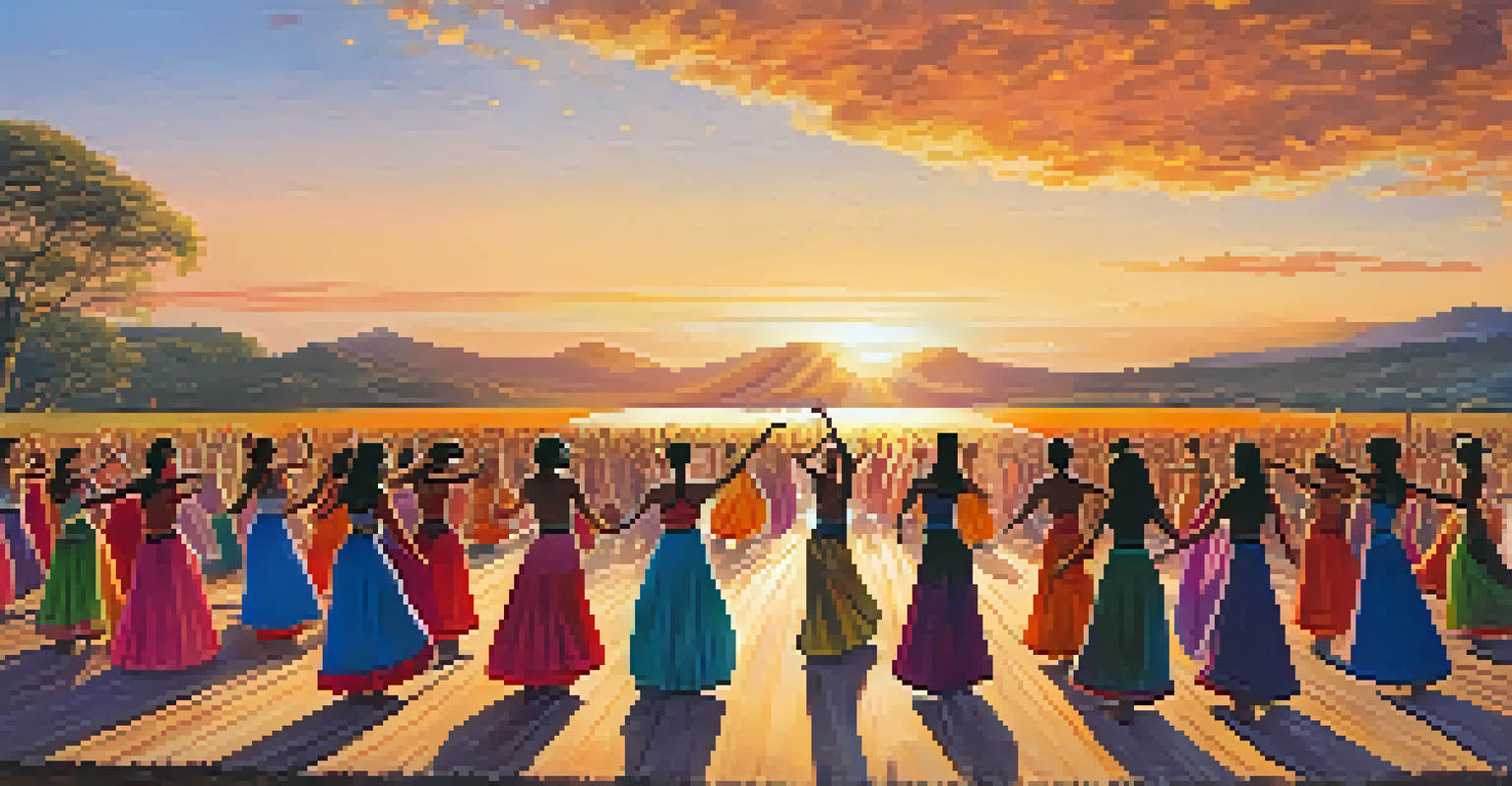Using Dance to Communicate Urgency of Environmental Issues

The Intersection of Dance and Environmental Awareness
Dance is not just an art form; it’s a powerful means of communication. When choreographed thoughtfully, it can convey complex ideas, emotions, and urgent messages about pressing issues like environmental degradation. By utilizing movement, dancers can express the urgency of environmental crises in ways that words sometimes fail to capture.
Dance is the hidden language of the soul.
When audiences engage with dance, they often feel a deeper connection to the themes presented. This visceral experience can lead to increased awareness and a call to action regarding environmental concerns. The physicality of dance grabs attention and can evoke a sense of urgency that often eludes traditional forms of communication.
For example, a performance that mimics the struggle of wildlife impacted by climate change can resonate emotionally with viewers, making the issue feel more immediate. This connection is vital; it transforms abstract concepts into relatable experiences, pushing audiences to reflect on their role in environmental stewardship.
Historical Examples of Dance in Environmental Movements
Historically, dance has been used to advocate for various causes, including environmental ones. One notable example is the 'Earth Dance' project, where dancers worldwide come together to celebrate and raise awareness for the planet. This event illustrates how dance can unify people around a common goal, making environmental issues feel more collective rather than individual.

Another powerful instance comes from Indigenous communities, where traditional dances often reflect their connection to nature. These dances communicate respect for the earth and highlight the consequences of environmental neglect. By incorporating cultural dance forms, we can amplify the urgency of these issues while honoring the traditions that emphasize environmental sustainability.
Dance as a Voice for Change
Dance effectively conveys urgent environmental messages that resonate emotionally with audiences.
These historical examples showcase the potential of dance as a tool for advocacy. They remind us that art can transcend language barriers, allowing people from diverse backgrounds to connect over shared concerns for our planet.
Choreography: Crafting a Message with Movement
Choreography plays a pivotal role in conveying environmental messages through dance. Movements can be designed to symbolize various environmental themes, such as fluid motions representing water or sharp, erratic gestures depicting natural disasters. Each choice made by the choreographer can heighten the emotional impact of the performance.
The earth has music for those who listen.
For instance, a dance piece that integrates sudden stops and staccato movements can evoke feelings of disruption, mirroring the effects of climate change on ecosystems. By carefully selecting movements that align with the message, choreographers can create a powerful narrative that resonates with the audience.
Moreover, the integration of visual elements, such as costumes and props made from recycled materials, can further enhance the message. This thoughtful approach ensures that every aspect of the performance contributes to the overall urgency of the environmental narrative being presented.
Collaborative Efforts: Dance and Environmental Organizations
Collaboration between dancers and environmental organizations can amplify the impact of performances. Many organizations are beginning to recognize the power of artistic expression in spreading their message. By partnering with dancers, they can reach new audiences and engage communities in meaningful ways.
For example, a local dance company might team up with an environmental NGO to create a performance that addresses local pollution issues. This partnership not only raises awareness but also inspires action within the community, encouraging individuals to get involved in environmental advocacy.
Historical Role of Dance in Activism
Throughout history, dance has united communities around environmental causes, showcasing its potential for advocacy.
These collaborations can take many forms, from community workshops to large-scale performances that draw attention to specific environmental challenges. By working together, the arts and environmental sectors can create a dialogue that fosters understanding and inspires change.
Dance as a Tool for Education and Engagement
Dance can be a compelling educational tool, making complex environmental issues accessible and engaging. Workshops that combine movement with education can help participants better understand the impact of their actions on the planet. This experiential learning approach allows individuals to internalize important concepts through movement.
For instance, a workshop that teaches participants to express the effects of deforestation through dance can lead to a deeper understanding of the issue. By embodying the message, individuals can develop a personal connection to the cause, making it more likely they will advocate for change.
Moreover, this form of education can be particularly effective with younger audiences. Children often respond well to movement-based learning, allowing them to explore environmental themes in a fun and engaging manner.
The Global Impact of Dance on Environmental Advocacy
The global reach of dance allows it to transcend cultural divides and bring attention to environmental issues worldwide. Events like 'Dance for the Earth' have proven that dance can mobilize communities across continents, creating a united front against environmental degradation. This collective action can amplify voices that are often unheard.
By showcasing performances from various cultures, the dance community can highlight diverse perspectives on environmental challenges. This inclusivity enriches the conversation and fosters a sense of global responsibility among participants and audiences alike.
Collaborative Power in Advocacy
Partnerships between dancers and environmental organizations enhance outreach and inspire community action.
Additionally, the digital age has made it easier than ever to share dance performances online. This increased visibility can inspire viewers worldwide to take action, creating a ripple effect that extends beyond the stage.
The Future of Dance in Environmental Advocacy
Looking ahead, the role of dance in environmental advocacy is poised to grow even more significant. As awareness of climate change and environmental issues increases, the arts will likely continue to be a vital part of the conversation. Dancers and choreographers are already exploring innovative ways to integrate these themes into their work.
Future performances could incorporate new technologies, such as virtual reality, to immerse audiences in environmental narratives. This could create an even stronger emotional connection, prompting viewers to take action in their own lives.

Ultimately, as we face the challenges of environmental crises, dance will remain a crucial tool for storytelling and advocacy. By harnessing the power of movement, we can inspire change and foster a deeper connection to the world around us.